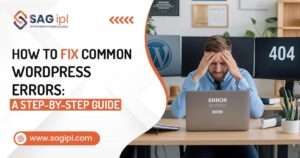Maintaining your online business website is as important as having a website in the first place. Typical website maintenance involves website updates, content refresh, error analysis and removal, and plugin optimization, among other things.
The cost of website maintenance may depend on a number of things, including but not limited to, maintenance frequency, type of maintenance, personnel involved, etc. So, all things must be considered when deciding on a website maintenance budget.
Regular care and maintenance of a website are crucial to ensure the smooth and proper running of your business site. If you try to ignore or skip this in order to cut the cost, you might end up with a bad website causing you to lose traffic and/or sales. Regular website maintenance is always a less expensive and recommended approach than waiting till the end and paying high for emergency repairs.
Depending on what approach you take, you can reduce the cost of maintaining your website by a great deal. For instance, the regular maintenance of your website will ensure no bad things happen to it unexpectedly, so no emergency repair costs. It’s the same as getting your car regularly serviced to ensure there are no unexpected failures.
In this article, we will try to figure out things like why it is important to keep your website maintained, how to do that, and how much it costs to maintain a website monthly.
🤔 Why is Website Maintenance Important?
Wondering why you need to regularly maintain or update your website? It is for the same reason that you should regularly service your bike or car. Because if you don’t, the life and performance of your vehicle will decrease drastically over time. However, website maintenance is a little trickier than that.
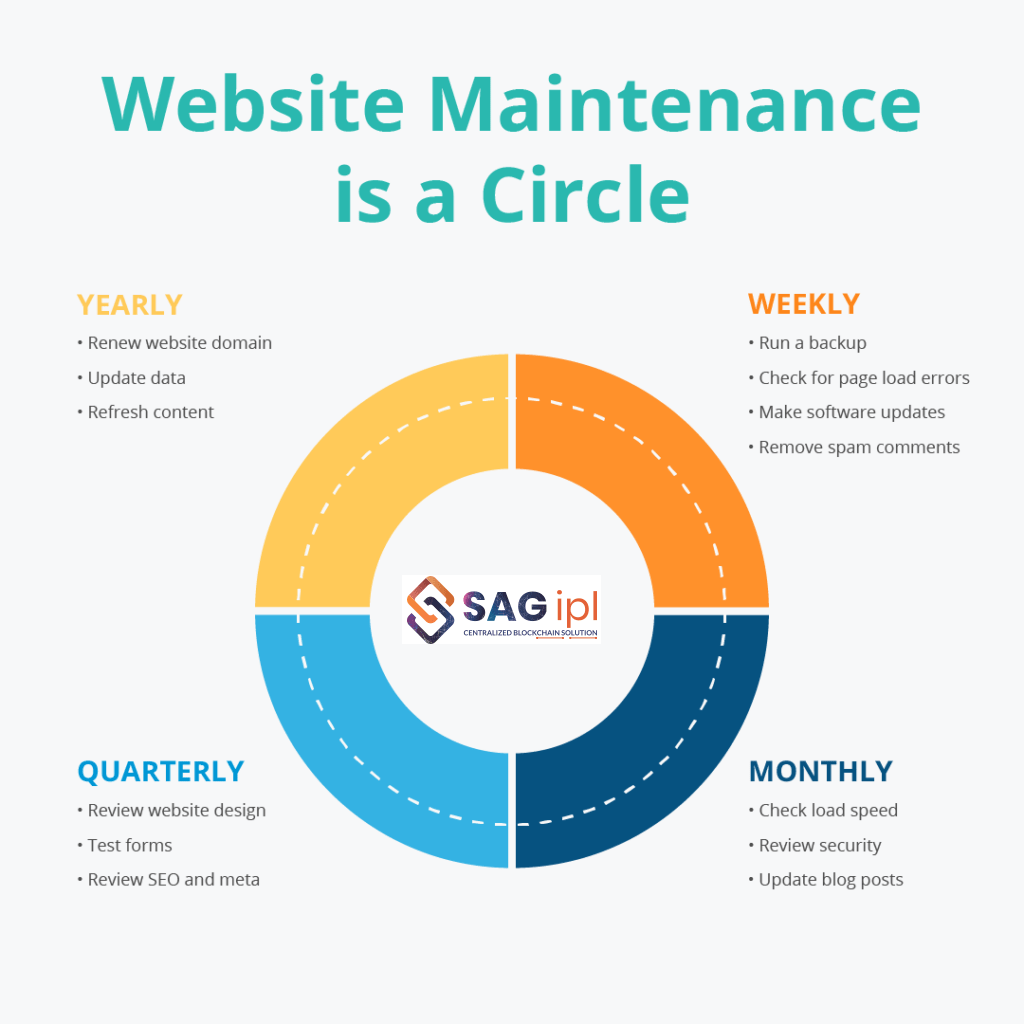
As I mentioned above, maintaining your online site is not just about checking and repairing it for bugs, it is also aimed at improving the site for a better user experience and constant engagement.
Your website is an online image of your business, which your potential and existing users use to analyze the value of your products/services.
Depending on how well you present your website to the world, the demand and worth of your services will be perceived accordingly. Besides that, here are some other reasons why it is important to maintain your website.
✅ Only a well-maintained and regularly updated website can preserve the interest of your existing customers and bring new customers.
✅ Search engines like Google prefer to rank websites with updated and fresh content higher in search results.
✅ Your website is an online image of your business. Keeping it fresh, attractive, and well-maintained is the key to improving your brand reputation online.
✅ Another major reason to regularly update/improve your site is to identify and remove security vulnerabilities.
✅ Keeping your website maintained will also help maintain its value over time, in the same way as the value of a vehicle over time largely depends on how well it is maintained.
Top Web Design Trends That Make Anyone Mesmerize!
📝 Things to be covered under Website Maintenance
Maintaining a website is almost equally important as building a website in the first place, or even more so in some cases. But what does it involve and how frequently should you update your website? Let’s figure it out.
Some people might think that website maintenance is only about identifying and removing bugs that appear over time, but this is not exactly true.
Website maintenance comprises a lot of things, as explained below.
1️⃣ Check for Security Vulnerabilities
This process entails performing a comprehensive security scan across the entire website, including all code and databases, to detect any potential vulnerabilities. These vulnerabilities could have emerged over time due to updates, new plugins, or external changes, or they might have been present since the initial development phase.
A thorough scan helps identify any weak points that could expose the website to attacks, ensuring that outdated or unsafe code, open ports, and weak configurations are addressed to maintain robust security.
2️⃣ Bug Fixes
Bug fixes involve testing your website to identify any issues, such as broken links, layout problems, or functionality errors. This process includes thoroughly reviewing each page and feature to ensure that everything works as intended. Once any bugs or errors are identified, they are corrected to improve the user experience and functionality of the website.
3️⃣ Speed and Compatibility Testing
Site speed is crucial both for improving your website’s ranking on Google and for providing an optimal user experience. A faster website is not only preferred by users but also rewarded by search engines, which can lead to higher rankings in search results.
1. Speed Testing:
- Why it’s important: Faster websites load quicker, reducing bounce rates and improving user engagement. Google considers page speed as a ranking factor, so it’s essential to optimize it for better search engine visibility.
- How to improve it: To speed up your site, remove unnecessary elements like large images, excessive graphics, outdated JavaScript, or unnecessary CSS code. Minimize the number of HTTP requests and compress files where possible. Leveraging caching and using a Content Delivery Network (CDN) can also help in reducing loading times.
2. Compatibility Testing:
- Why it’s important: Compatibility testing ensures that your website functions correctly across different browsers and devices. As users access websites on various platforms like Chrome, Firefox, Safari, mobile phones, and tablets, it’s essential to test your website’s compatibility with all of these.
- How to improve it: Check how your website displays and works on different browsers (e.g., Chrome, Firefox, Safari) and devices (e.g., mobile phones, tablets, desktops). Ensure that all features (forms, buttons, navigation, etc.) function as expected. Mobile optimization is particularly crucial as a large portion of users access sites via smartphones.
By conducting both speed and compatibility testing, you ensure that your website is fast, accessible, and user-friendly across all platforms, leading to improved SEO rankings and a better user experience.
4️⃣ Software Update
Keeping your website’s software updated is essential for maintaining both security and performance. Regular updates ensure your site is running on the latest version, which includes critical security patches, bug fixes, and new features.
Neglecting updates can make your site vulnerable to security breaches and impact its functionality, leading to a poor user experience. Make it a priority to schedule regular updates to reduce risks and ensure your website remains reliable and secure.
5️⃣ Search Engine Optimization
Search Engine Optimization (SEO) is the process of enhancing your website’s visibility in search engine results to attract more organic (non-paid) traffic. It involves optimizing various aspects of your website, like content, keywords, metadata, and technical structure, to align with search engine algorithms. By improving these factors, you increase the chances of your site appearing higher in search results, making it more likely for users to find and visit your website.
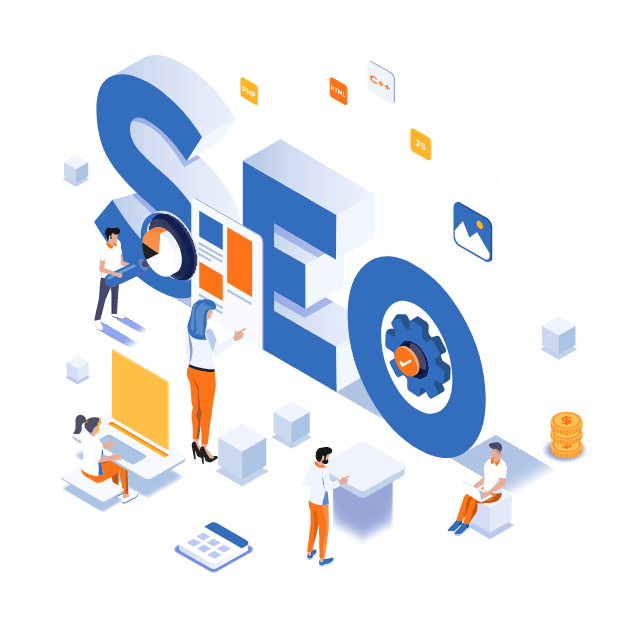
Hiring a professional SEO company can be beneficial because they bring expertise in keyword research, link building, content creation, and technical SEO adjustments. They can conduct a thorough site audit, implement strategies tailored to your industry, and monitor the results to continually improve your ranking. This results in better visibility, more site traffic, and ultimately, growth in your online presence.
6️⃣ Website Backups
It’s essential to have a reliable automated backup system in place for your website. This ensures that a current copy of your website’s data and content is regularly saved, allowing for quick restoration in case of issues like hacking, data loss, or accidental changes. Automated backups provide peace of mind, as they continuously save the latest version of your site without needing manual updates.
Make sure the backup system stores copies in a secure, off-site location, and verify that backups are accessible and easy to restore when needed. This precaution protects your website’s integrity and minimizes downtime during recovery.
7️⃣ Content Optimization
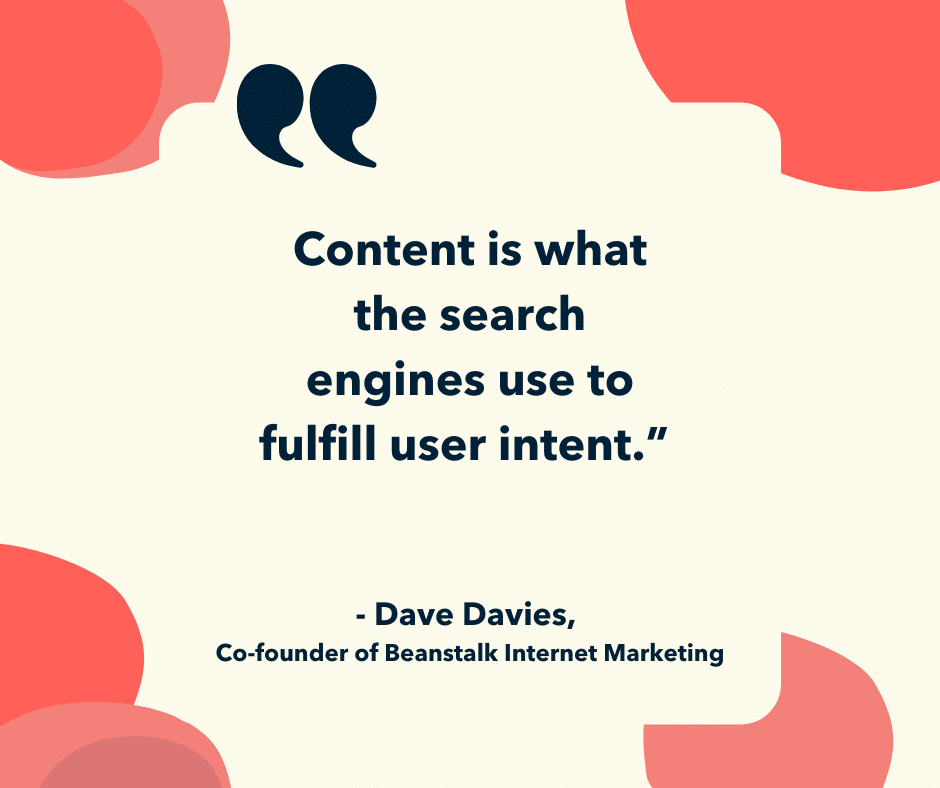
Content optimization is the process of enhancing your website’s content to ensure it is valuable, engaging, and relevant to both search engines and users.
Regularly updating your site with fresh, unique, and high-quality content is essential for boosting search engine rankings and maintaining visitor interest. By continuously adding well-researched, relevant, and original content, you improve the likelihood of appearing in search results while also providing users with new information and reasons to return to your site.
This approach increases engagement, builds authority, and supports better visibility in search engines, which is key for long-term success.
8️⃣ Functionality & Features Testing
Functionality and features testing involves verifying that all the essential functions and features of your website work as intended to provide a smooth and user-friendly experience. This process ensures that everything, from navigation buttons to interactive elements like forms, links, and media, operates seamlessly.
To maintain a high-quality user experience, it’s crucial to regularly test your website for any potential issues or bugs that could disrupt its performance. This testing may involve checking things like:
- Navigation and Links: Ensure that all buttons, links, and menus are working properly and lead users to the correct pages.
- Forms and Data Submission: Verify that all forms on the site are submitted correctly and that any data entered is processed without errors.
- Responsive Design: Make sure the website functions well across different devices, screen sizes, and browsers.
- Interactive Features: Check features like search functionality, chatbots, or e-commerce carts to ensure they are performing as expected.
- Loading Speed and Performance: Test the website’s loading speed to ensure it doesn’t lag or cause frustration for users.
Testing and updating your site periodically is essential to address any problems before they impact user experience, keeping the site functional and efficient over time.
9️⃣ Design & Layout Optimization
Website design and layout play a crucial role in user experience, and it’s essential to regularly review and optimize them. This doesn’t mean that you need to completely overhaul the design every time, but instead, focus on identifying and correcting any issues that could affect usability or aesthetics.
Optimization involves:
- Error-Free Design: Ensuring there are no broken links, misaligned elements, or incorrect visual representations. This is about maintaining a clean, polished look that doesn’t distract or frustrate users.
- Responsive Design: Checking that your website works seamlessly across all devices (desktop, tablet, mobile) and browsers. Layout adjustments may be necessary to ensure that content is accessible and visually appealing everywhere.
- Navigation and User Flow: Reviewing the layout to ensure easy navigation and an intuitive user flow. The design should make it simple for visitors to find what they are looking for without confusion or excessive scrolling.
- Performance: Ensuring that design elements, such as images and animations, do not slow down the website’s loading time. Optimizing file sizes and considering the impact of heavy design features on speed is essential for a smooth user experience.
- Consistency: Ensuring that the website maintains a consistent visual style and tone across all pages. A unified color scheme, font choices, and layout patterns help reinforce the brand identity and make the site easier to navigate.
By regularly reviewing and improving these elements, you can ensure that your website remains user-friendly, visually appealing, and effective in achieving its goals.
🔟 Performance and Analytics
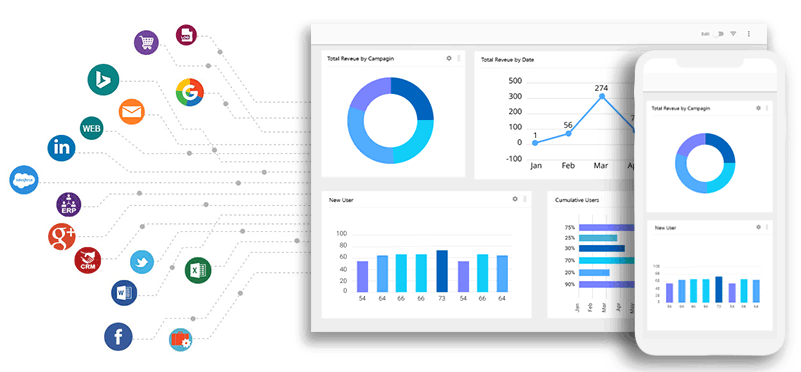
Monitoring and understanding your website’s performance is essential for growth and success. By using tools like Google Analytics, you can track key metrics that reveal how users interact with your site, such as the number of visitors, popular pages, bounce rates, and user flow.
These insights allow you to make data-driven decisions to improve user experience, optimize content, and enhance engagement. Setting up a reliable analytics system not only helps track performance but also identifies areas for improvement, ensuring your site continually meets the needs of its audience.
🔎 The Cost Analysis of Website Maintenance
Now that you know and understand the importance of website maintenance and how it is done, it is time to get into the cost of Website Maintenance. Yes, you guessed it right. Maintaining your website will take both effort and price.
So, you have two options here:
1️⃣ Hire an in-house website maintenance team
2️⃣ Outsource the job to a professional website development company
Then, you need to figure out the things that you want to update or change in your website, and when. Some of these things may be time-sensitive, such as software updates, framework upgrades, etc., so you need to build a timeline accordingly.
Here’s a brief analysis of the website maintenance cost in 2024, according to the various parts to be maintained.
If your website is based on an external framework application, such as WordPress or Drupal, you need to update the same as soon as new updates are released. Each new version of the website framework comes with certain features and/or security upgrades which may be crucial for your website to work seamlessly in the long run.
If you do not update your website software on a regular basis, your website may become vulnerable to security issues and hacking.
If you are using free software like WordPress, framework upgrades should be mostly free. Some advanced features and plugin updates, however, may cost you extra.
Third-party plugins and extensions that you use on your website also receive constant updates from the owner. These updates should be implemented immediately to ensure the smooth running of various operations.
Also, you should check the website thoroughly after updating each plugin to make sure that the new update is not impeding any website feature/functionality.
For website maintenance to be an ongoing task, it is recommended to hire a full-time in-house or remote IT team for the job. This way you will not have to worry about the constant updates and whether your website is performing to its full potential.
You can hire a full-time IT consultant or expert with a remote Web Agency, who will keep a constant watch on your website, monitoring its performance, removing bugs, and installing regular software updates. To be honest, it will not cost you much compared to the returns and benefits it can give to your website.
When you hire a full-time IT service team, you’ll no longer have to worry about various maintenance tasks such as software/framework updates, analytics, performance tracking, script analysis, bug removal, security upgrades, design/development, SEO support, etc. The usual cost distribution is as follows.
Website Maintenance Cost at SAG IPL:
| Hourly Rate | $5-$15 |
| Monthly Rate | $500-$1500 |
| 24/7 Website Maintenance Cost (Monthly Rate) | $1,000-$3,000 |
Most web development companies provide maintenance services as a part of their overall package, so you can save on the cost by choosing that as well.
Other than the above-mentioned charges, you may have to pay extra for the following related services:
| Recurring hosting cost | $10-$100 per month |
| Domain (renewal) cost | $15 a year |
| Security (SSL) | $50 a year |
| Backups | $5-$50 a year |
| Content updates | $5-$15 per hour |
| SEO maintenance | $5-$15 per hour |
Conclusion
Website Maintenance is an important part of your overall online business and marketing campaign, which should not be ignored if you desire to make a successful and everlasting online presence for your business.
If you are concerned that your website is not performing well or up to its potential, you should immediately consult with your web maintenance agency or in-house team to analyze the problem, and the average cost of website maintenance and act accordingly.
Do Not Have
Website Maintenance Team Yet?
Check Out These Comparison Posts You Might Find Helpful:
Cost To a Build Website in 2024
Costs To Promote a Crypto Project
Cost To Build a Blockchain Project
Cost To Start a Crypto Exchange Marketing
Have thoughts or suggestions about this article? You can write them in the comment section below. If you want to have a quick chat, we are just one message or phone call away.
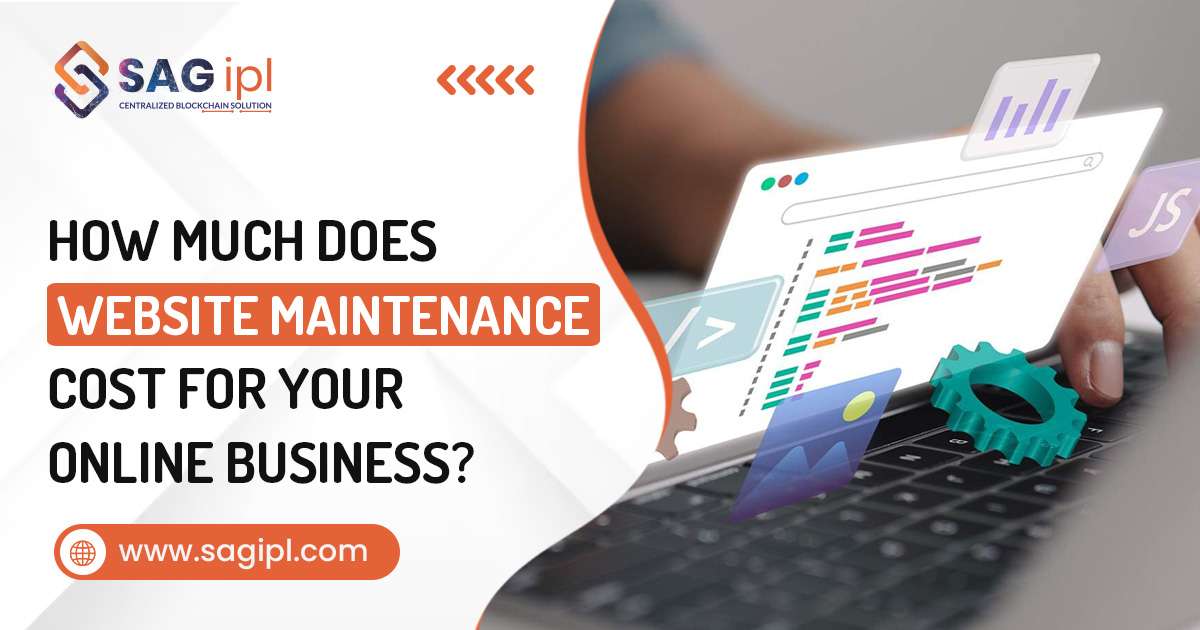


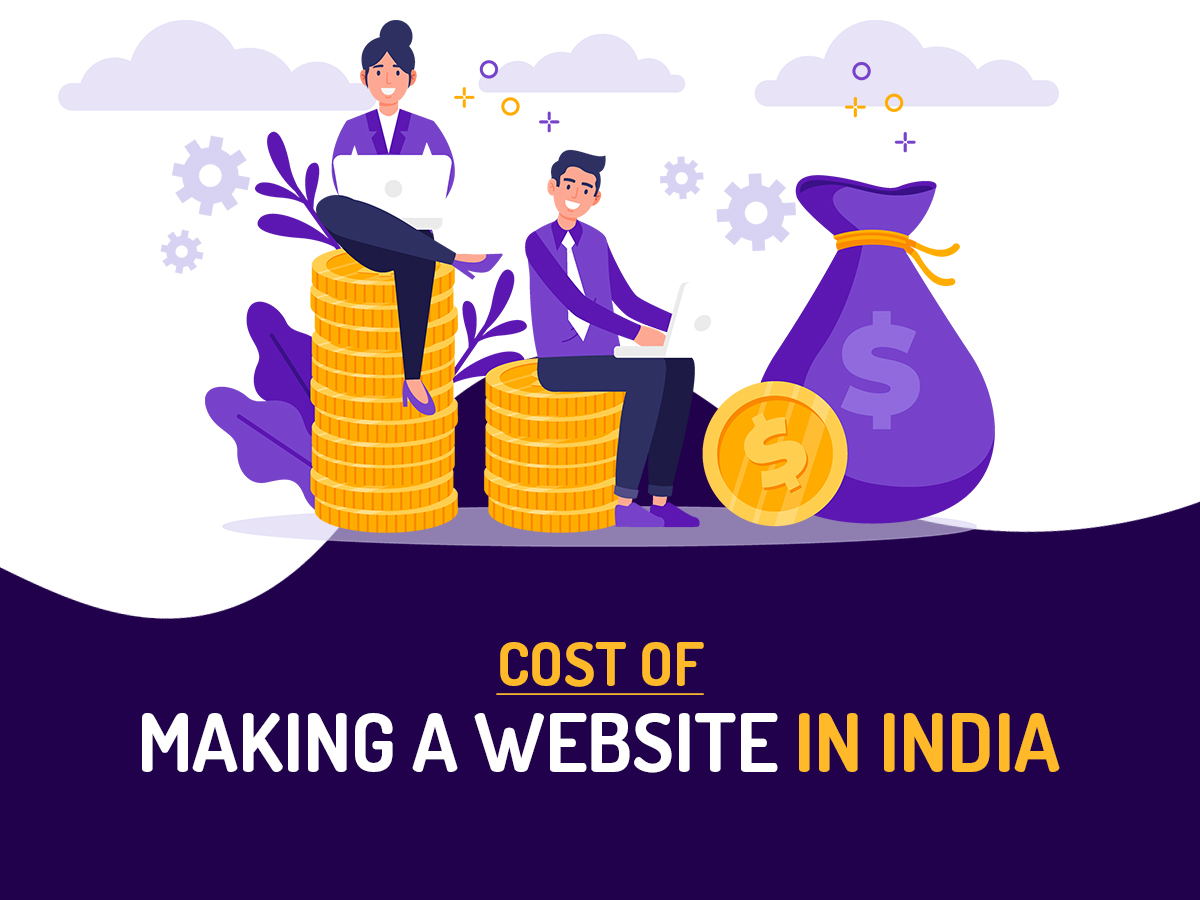

![Common Web Development Problems & Their Solutions [2025] Web Development Problems](https://blog.sagipl.com/wp-content/uploads/2023/08/Web-Development-Problems-300x158.jpg)
